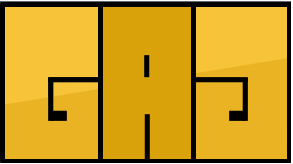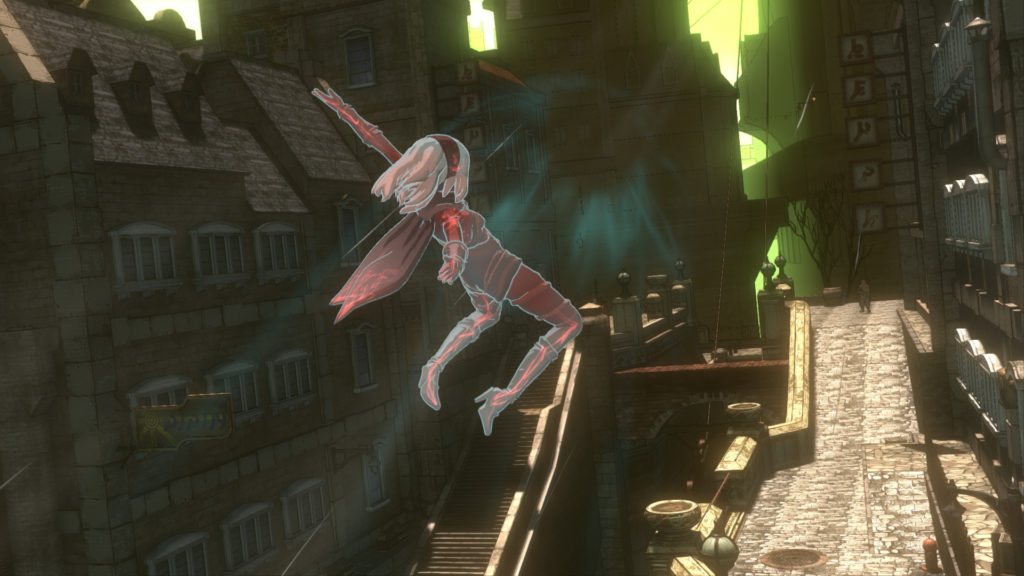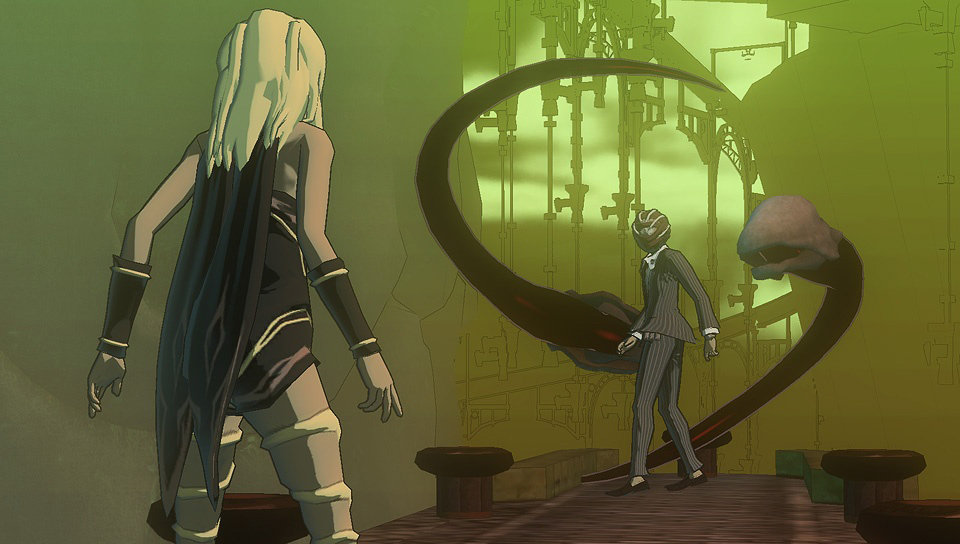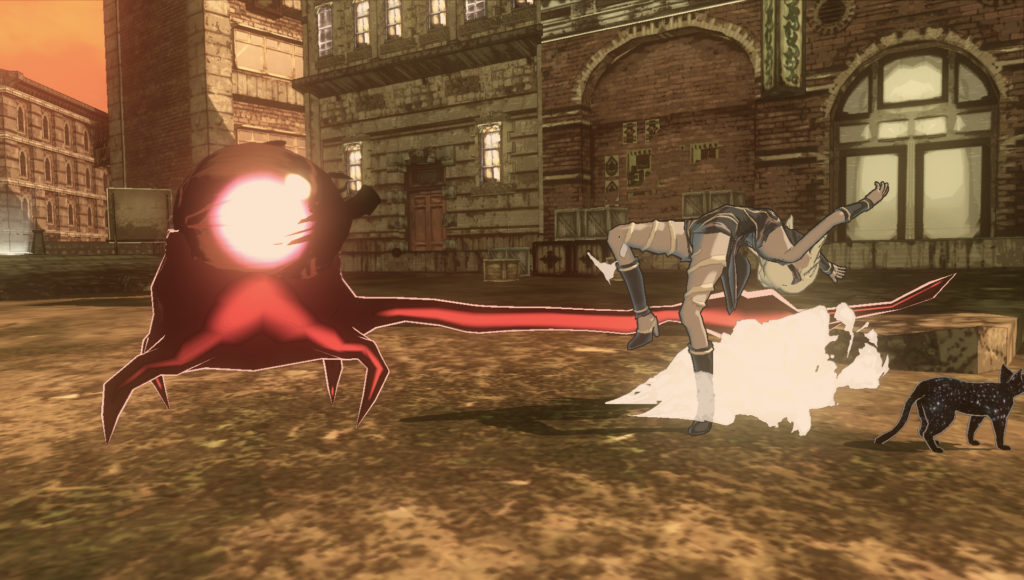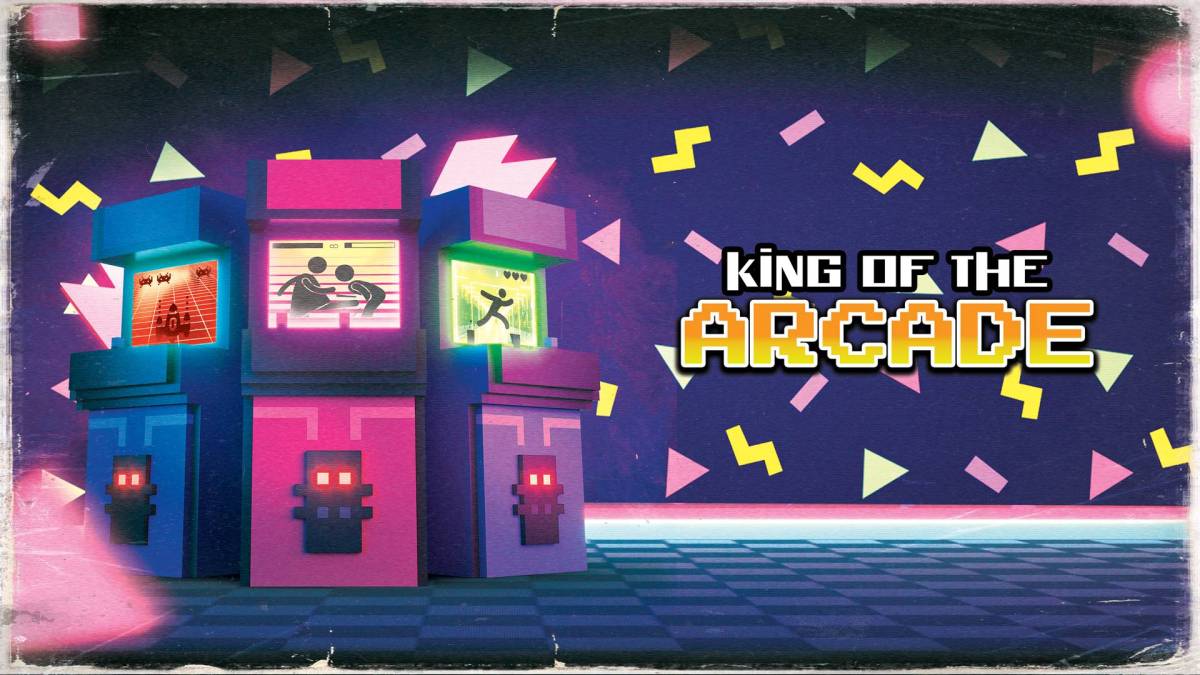
Platform: Vita
Jumping to avoid an untimely death at the bottom of pit with spikes. Jumping to avoid an enemy charging your way. Jumping to avoid plummeting to your death in a bottomless pit (which is probably the most horrendously boring way to go). Jumping has been a central game mechanic that games have been built around for decades. In Gravity Rush, jumping to new heights takes a backseat to the other half of jumping – falling. Falling seems like a strange mechanic to build a game around that isn’t about those guys jumping off cliffs with suits that bring thoughts of a flying squirrel to mind. With gravity your play toy, falling here is a more controlled endeavor than anything in the real world.
Gravity Rush puts you in the shoes (high heeled pumps, to be more precise) of Kat, a girl literally thrown in the world with no memory of who she is or how she got there. Upon awakening, Kat is joined by a cat that allows her to shift gravity at will, allowing her to essentially fly through the city. The city, as it becomes unlocked, is divided into sections that have their own feel and aesthetic (and color scheme). These sections are also traversable rather seamlessly once you have upgraded your gravity meter enough to go from section to section without the use of fast travel points or hitching a ride on top of the mass transit system that connects the areas.
The world Kat finds herself is a slightly magical steam punk world finding itself being destroyed. Sections of the city are disappearing, people are disappearing, Nevi (the game’s monsters) attack the remaining sections of the city at random, a turbulent political landscape, and a rival Shifter (what the inventive townspeople call you for your ability to shift gravity at will) all build up what seems like a lead up to an intriguing narrative. Sadly, the few mysteries answered are fairly simple and obvious while teetering on the precipice of clichéd, but most are left up in the air when the game reaches its conclusion.
As you progress through the game, more abilities unlock that allow Kat to vary her attack and maneuvering options. You can upgrade these abilities (along with Kat’s health, gravity, and dodging) by collecting gems. The gems are scattered throughout the city, encouraging you to explore the world from top to bottom. You can also earn gems by completing challenge missions like point-to-point time trails or defeating a certain amount of enemies in a certain amount of time. Some of these have limitations on how you can approach the challenges. Being limited to throwing items at enemies using your stasis field or starting a race with an empty gravity gauge can teach you the subtleties of some of your less frequently used abilities.
My biggest issue with Gravity Rush is the combat. When there’s only a few enemies onscreen, the combat system is more than adequate, but throw in more than that and things can get a little hectic and disorientating. If you fling yourself at enemy and they suddenly dodge you, stopping and tracking where the enemy went can leave you vulnerable for a few seconds, setting you up for some cheap shots. There are reticles giving you an idea of where the enemies are, but keeping track of which one you were going after when there are ten others onscreen can lead to you retreating just you can get your bearings back. While the combat isn’t particularly difficult, this can lead to some frustrating deaths or, at least, an interruption in the flow of combat. Having some sort of lock-on feature would likely alleviate most of these instances, making it all the more frustrating that a seemingly simple thing could lessen the time spent looking for your target.
Graphics – A lovely cel-shaded aesthetic for characters and the world helps this feel like a manga come to life (the comic panels don’t hurt that feeling either).
Sound – The Ico-like mix of the made up language that sounds like French and Japanese makes up the minimal speech in the game. Soundtrack is varied and interesting. Sound effects are serviceable.
Gameplay – Aside from the occasional wonky camera snag, the “falling” is solid. Fast paced flying can cause some sense of disorientation. The combat is the most guilty of disorientation due mostly to the camera not being able to keep up or having some auto-target function.
Story – A fair amount of potential left stumbling at the game’s end. A decent tale, but the end won’t find all your questions answered.
Replay Value – Once you’ve completed the game, you can go back and collect gems to further boost your abilities, which will aid you in completing the challenge missions.
Overall Length – A quick run through will see you in the ten hour range. Collecting extra gems and completing the challenges can add a few more.
This isn’t the killer app the Vita has been waiting for, but the game takes advantage of the system’s features very well. Gravity Rush is beautiful to see in motion, taking advantage of the Vita’s horsepower with nary a framerate hiccup to be seen. The only required touch screen uses are fairly minimal, mostly used for menu selections. Gravity sliding, the required touch screen and accelerometer gameplay mechanic, isn’t as intuitive as the rest of the controls, but becomes much simpler once you get the hang of it. Aside from that and the aforementioned occasional camera issues, I’d have a hard time not recommending this. It’s a solid, unique title for a system just finding its legs.
